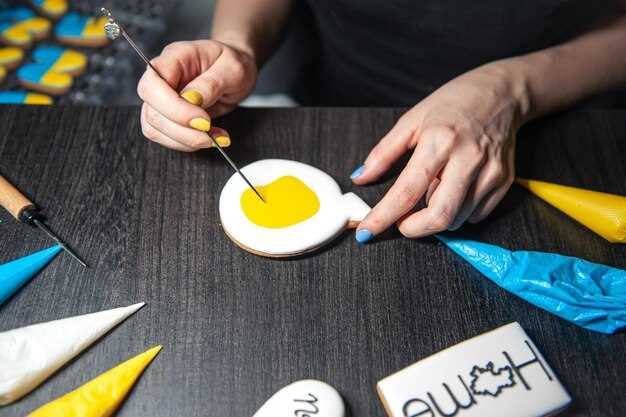Start weekly check-ins with your spouse and celebrate small wins to boost success. Build a shared schedules rhythm, stay receptive, never fear asking questions, and treat every situation as a joint process in which both stand together even amid insecurity.
Respect is bedrock for trust and security. Listen actively, acknowledge feelings, and avoid sarcasm or dismissive tones. When children enter life, reinforce shared boundaries and routines so both partners stand united, no matter what chores or surprises arise.
Theyre often asking whether theyre doing enough, yet simple actions accumulate trust: regular check-ins, showing gratitude, and avoiding silent treatments. If theyre unsure, small aids like shared calendars and simple rewards keep love mapped across schedules and reduce insecurity.
In difficult situations, use a joint process rather than blame. When insecurity surfaces, ask constructive questions instead of criticizing; small aids such as journaling, shared playlists, or couple coaching can help. Definitely commit to growth, schedules, and trust-building rituals so progress keeps moving.
Putting yourself in shoes of partner improves understanding and reduces misreads. Ask for support with specifics, and share impact on mood or energy; this stance strengthens trust and keeps conversations productive even during disagreements.
Consistency in routines matters; schedules align priorities and reduce friction. Cultivate trusting habits by inviting open sharing, and avoid guarding details that matter to partner. Treats like small notes, compliments, or a surprise coffee break reaffirm connection even on busy days. When a rough situation appears, address it together rather than apart; that joint approach strengthens unity.
Regularly reflect on what success looks like for both spouses; pick one concrete goal weekly for accountability.
These practices create a resilient bond that celebrates growth, not perfection.
Relationship Mastery: A Practical Guide to Lasting Love
Schedule a 15-minute weekly check-in with your partner to discuss needs, fears, and recent joys. During moments like this, ask open questions, listen actively, and avoid lies. This practice lowers insecurity and builds mutual understanding.
- Quality listening: maintain eye contact, paraphrase, reflect feelings to show understanding.
- Choosing transparency: share a small worry each day to reduce hidden tensions.
- Questions as a tool: use prompts that reveal values, needs, and boundaries; examples below.
- Loving tone: stay curious, show genuine care, and avoid sarcasm.
- Open value: state what you need, invite responses without judgment.
- Situation handling for couples with children: align routines, plan together, join conversations, and avoid undermining parenting decisions.
- Humor and warmth: a smile or light remark during tension keeps connection strong and motivates you to grow.
- If insecurity or lies arise, address directly, explain why it happened, and establish repair steps; definitely builds trust over time.
- Licensed support when needed: consider a licensed professional to deepen skills and offer guidance.
Below is a simple exercise to start now:
- Find a consistent moment for a 10-minute exchange; during this time, each partner shares one feeling and one need without interruptions.
- Join with reflective listening: repeat back what you heard and ask one clarifying question.
- Agree on one concrete action to support your partner during upcoming week, and smile when you succeed.
Example scenario: one partner feels unhappy due to a busy schedule. Open talk reveals need for more quality time. By choosing to schedule shared activities, couples can grow closer and feel more in sync.
Daily Communication Rituals that Strengthen Connection
Begin each morning with a 5-minute personal check-in to share mood, main need, and one small win from yesterday.
End-of-day 3-minute high-quality talk focused on what felt emotionally meaningful, what remains, remaining items to address, and what still needs attention; aim to feel appreciated and supported.
During friction, talk instead of blame; isnt productive to blame; tell truth, describe feelings, acknowledge situations that matter, and avoid lies; aim to be clearer rather than to win.
Weekly practice: swap view on one ongoing situation; acknowledge what one thinks may not match what another feels.
Midweek sprint: prioritize listening over replying; set a 2-minute timer; perform responses with clarity; repeat back what you heard to confirm understanding; discuss what actions mean.
Empathy drill: step into partner’s shoes during talks; if something feels off, ask clarifying questions instead of drifting into dark assumptions; cultivating knowing grows.
Close with a note of appreciation: mention one specific action you valued, asks to continue, and expresses willingness to support.
Trust-Building Actions That Grow Security
Start with a daily 5-minute check-in focused on present feelings and needs. Home enables safe space for dialogue and predictable rhythm. These patterns build security across decades of partnership. First, keep shoulder relaxed and posture open to signal safety during tough moments.
Focused listening matters; reflect what you hear, then name one feeling your partner expressed. Keep a calm, confident voice and shoulder that stays steady. Ask questions that invite intelligence and curiosity rather than judgment. Whenever a question arises, answer with curiosity rather than defensiveness. In-the-moment cues help you reset before damage escalates. Use coded signals like ghanbari or kret to pause and rejoin when needed.
These actions should become routine in home life and celebrations of small wins. Use consistent scheduling for check-ins, meals, and shared tasks; consistency builds composure. Present moment awareness helps ones feel safe and alive. If you sense misreading, suggest pausing briefly and revisiting a clearer phrase. This approach celebrates everything that goes right. Despite pressure, offer kindness and steady presence, and celebrate improvements rather than assigning blame. Granted transparency guides growth, common sense matters more than clever tactics.
Active Listening Techniques for Deep Understanding
Spend a moment before conversations to set intention: giving full attention, cultivating kindness, staying receptive, and resisting ready-made answers that shut vulnerability.
Let silence exist; this demonstrates composure and signals respect. Maintain steady breathing, nods, and appropriate eye contact to reinforce listening without hijacking tempo.
Paraphrase speaker’s words, then ask clarifying questions: You feel hurt, you want reassurance; this helps finding common ground and congruent signals across emotions.
At table, name a single significant emotion and describe its impact without accusation; this reduces defensiveness and builds mutual understanding.
Use features of listening: restating feeling, summarizing, and reflective questions; empathetic engagement fosters trust.
Author notes for couples: a simple table routine can become a tool for a woman or partner to voice vulnerability without judgment. Couples should prioritize listening as a daily practice to strengthen quality connection.
Suggest a short routine: spend 10 minutes after each talk to note which technique yielded clearer understanding, where hurt lingered, and what to adjust next time.
Відпустіть фантазії про бездоганний діалог; натомість прислухайтеся до нюансів, помічайте невірне розуміння та усувайте дисонанс, перш ніж він розростеться.
У реальних взаємодіях витрачайте час, щоб зрозуміти перспективу партнера, а не готувати заперечення; така позиція підтримує довіру, безпеку та змістовне з'єднання. Кожна розмова представляє виклик як можливість для зростання.
Усвідомлення емоцій: Називання почуттів у режимі реального часу
Чітко називайте почуття, коли воно виникає. Ця практика цінується, оскільки вона допомагає чесним обмінам і зменшує неправильне трактування сигналів. Почніть із конкретної назви, такої як гнів, смуток, страх або розчарування, а потім додайте інтенсивність: легкий, помірний або сильний. Це називання потребує практики, але швидко покращує розуміння.
Зупиніться ненадовго, вдихніть, позначте, що ви відчуваєте, а потім перевірте значення. Спочатку використовуйте такі слова, як важко, перевантажено або сумно, щоб описати це. Потім уточнюйте до точних емоцій, таких як розчарування чи біль. Ця звичка допомагає справлятися та запобігає потенційним втратам від реактивних дій.
Реальне часове маркування підтримує чесну істину та розуміння за діями. Коли ви ділитеся мітками зі своїм партнером, будьте уважні, уникайте звинувачень. Скажіть: Я відчуваю X, тому що Y, що потребує зусиль і допомагає впоратися з напругою, зміцнюючи довіру та прощаючи, коли це необхідно. Це не про звинувачення; це про спільне значення та рух вперед з наміром. Це може врятувати зв'язок від втрат, навіть якщо виникають складні моменти.
Мічення розкриває сенс, що стоїть за діями, а не лише поверхневими рухами. Воно допомагає вам та вашому партнеру зрозуміти, чого ви насправді хочете. Якщо гнів маскує страх, називаючи страх, ви запрошуєте спокій, тоді ви можете вирішити, як реагувати, а не просто зреагувати. Це сильний, проактивний шлях, який вимагає зусиль, але винагороджується у складних моментах.
З часом ви виявляєте закономірності за емоціями, і пари приходять до чіткіших шляхів реагування, замість того, щоб переглядати старі образи, що заощаджує час та енергію.
Розвиток сильної емоційної грамотності вимагає постійних зусиль та практики. Чітке визначення зменшує неоднозначність. Іноді почуття, що стоять за діями, проявляються як очікування. Якщо ви будете наполегливі у практиці, навіть складні обміни стають менш болючими, а ви обидва досягаєте взаємного розуміння та вдячності. Якщо нічого іншого не допомагає, розпізнавання залишається якорем. Чесне визначення може бути прощаючим, коли трапляються помилки, дозволяючи вам врятувати довіру замість того, щоб тягнути з собою втрати.
За кожною міткою лежить потреба чи страх; називаючи цю потребу, ви відкриваєте правду про те, що важливо для вас. Це критично важливо під час переговорів з високими ставками. Це робить наступні кроки зрозумілішими та допомагає вам справлятися з важкими моментами.
Надання простору для того, щоб кожен ярлик був почутий, будує довіру, навіть коли у вас є важка тема. Пам'ятайте: чесність, терпіння та прощення - це не виправдання уникнення правди; це інструменти, які рятують зв'язки.
Здорові межі та спільні цілі для тривалої узгодженості
Почніть з узгодженої карти меж. Не вдавайте, що партнери мають однакові потреби; натомість чітко визначте неприйнятні речі, а потім домовтеся, як реагувати на їх порушення. Відкрито висловлюйте потреби та говорити, коли межі перетинаються, щоб дії не передували вибаченням і не були нижчими за очікування. Однак межі повинні залишатися гнучкими, щоб адаптуватися до зростання.
Identify strengths each partner brings to sharing goals. keep remaining focus on what matters: safe, respectful talk that moves you toward best outcomes. What next? define concrete steps, deadlines, and measurable signals that shows progress. aim for a perfect balance between personal needs and joint aims, while respecting human limits. plus collaboration increases odds of success and helps you become stronger as a unit. There are ways to stay motivated and join forces to stay actively aligned toward mutual growth. There, you see what builds trust and what falls apart when voices go quiet.
Встановлюйте межі з взаємною повагою. Для чоловіків та партнерів, приймайте простір та час, коли це необхідно; приймайте, що деякі дні потребують самоаналізу. Якщо хтось приходить на зустріч з іншим поглядом, людські почуття залишаються неушкодженими, і ви обидва стаєте учнями, а не переможцями. Такий підхід підтримує надійний зв’язок набагато довше, ніж початковий ентузіазм, і спрямований на спільні цілі, навіть коли погода стає штормовою.
Практикуйте активне мовлення: говоріть про потреби конкретно, висловлюючи межі як дані, а не звинувачення. Активне слухання допомагає вам чути, що має на увазі кожна людина. Однак, ви повинні залишатися допитливими та уникати закриття; цей стиль мотивує довіру, підтримує зв’язок і може перетворити напружені розмови на конструктивні сесії.
Якщо сталася помилка, відновите її, вирішивши проблему швидко. Є способи відновити надійну стійкість: визнайте помилку, вибачтеся, відкоригуйте та знову тримайтеся за руки. Скажіть партнеру, що буде далі; обговоріть кроки щодо виправлення та як залишатися узгодженими. Ваші зусилля залишатися залученим мають значення; навіть якщо імпульс падає, залишається надія, що ви зможете стати ближчими та уникнути того, щоб хтось залишився один. Завжди є місце для руху до кращого узгодження, крок за кроком.

 9 Якостей Найуспішніших Відносин – Практичний Посібник для Триваючої Любові">
9 Якостей Найуспішніших Відносин – Практичний Посібник для Триваючої Любові">


 Як знайти мотивацію продовжувати онлайн-знайомства, коли не зустрічаєш відповідну людину">
Як знайти мотивацію продовжувати онлайн-знайомства, коли не зустрічаєш відповідну людину">
 Як побудувати коло спілкування з нуля – практичні поради">
Як побудувати коло спілкування з нуля – практичні поради">
 Ключ до щасливих стосунків – опануйте свої негативні думки">
Ключ до щасливих стосунків – опануйте свої негативні думки">